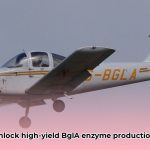“`markdown
Master Universal Probe Library: Gene Expression Analysis Guide
Universal Probe Library: A Gene Expression Analysis Guide
Let’s explore Universal Probe Libraries (UPLs), a powerful method for gene expression analysis using real-time PCR. UPLs enhance research by working across diverse species, reducing the need for custom probes. The probe design process has transitioned from the Assay Design Center to Neoformit Primers. This guide will help you navigate this shift, effectively utilize UPL technology, and optimize assays.
Understanding Universal Probe Library Technology
UPLs utilize standardized, short hydrolysis probes that bind to conserved gene regions, enabling broad species applicability. These probes, typically 8-9 nucleotides long, are labeled with fluorescein (FAM) at the 5′ end and a dark quencher at the 3′ end. The universality simplifies experiments, eliminating the need for designing unique probes for each organism. The incorporation of Locked Nucleic Acids (LNAs) into the probe sequence enhances binding strength and specificity. While the shift to Neoformit Primers offers potential improvements in primer and probe design, it’s essential to understand best practices for probe selection and validation to ensure accurate results. This technology simplifies the experimental process, allowing researchers to focus on data analysis and leveraging multiplex assays.
Selecting and Designing Your Probes: A Practical Guide
Probe selection is pivotal for UPL experiment success. Careful planning and execution, combined with post-design validation, are key.
Step 1: Know Your Targets: Identify the genes of interest and confirm their sequences using databases like NCBI Gene. Accurate upfront research prevents downstream problems.
Step 2: Utilizing Neoformit Primers: Employ Neoformit Primers for UPL probe and primer selection, carefully considering amplicon length (typically 70-150 bp), GC content (ideally 40-60%), and melting temperature (Tm) of both primers and probes. Aim for a primer Tm of around 60°C and a probe Tm of approximately 65-70°C, adjusted for LNA content. Several iterations and options improve result accuracy.
Step 3: In Silico Validation: Use tools like the NCBI Primer-BLAST to check for potential off-target binding sites for both primers and probes. This in silico validation prevents unintended amplification of non-target sequences.
Step 4: Empirical Validation: Validate selected probes and primers with positive and negative controls before comprehensive experiments. This verification ensures probe specificity and effective signal detection. Run a melt curve analysis post-PCR to confirm a single, specific amplicon. Consider using gel electrophoresis to visualize the PCR products and verify the expected amplicon size.
Experimental Workflow: A Step-by-Step Guide to Success
Follow this workflow closely for optimal results.
Step 1: RNA Extraction and Purification: Extract RNA from samples using a reliable method (e.g., TRIzol, Qiagen RNeasy) to ensure high-quality RNA with minimal DNA contamination. Assess RNA quality using a spectrophotometer (A260/A280 ratio of ~2.0) or a bioanalyzer (RIN > 8).
Step 2: cDNA Synthesis: Convert RNA into cDNA using reverse transcription with a high-quality reverse transcriptase (e.g., SuperScript IV). Include a DNase I treatment step to remove any residual DNA. Use oligo(dT) primers for mRNA or random hexamers for total RNA.
Step 3: Setting Up Your Real-Time PCR: Prepare the real-time PCR reaction mix with UPL probes, primers, master mix (containing a hot-start polymerase), and cDNA template. Use a master mix specifically formulated for probe-based qPCR (e.g., Roche LightCycler 480 Master Mix). Accurate pipetting is crucial; consider using a multichannel pipette for replicates. Include a no-template control (NTC) and a no-reverse transcriptase control (-RT) to rule out contamination.
Step 4: Running the PCR and Collecting Your Data: Load prepared reactions into the real-time PCR machine. Use recommended cycling conditions: initial denaturation (95°C for 10 min), followed by 40-45 cycles of denaturation (95°C for 10 sec) and annealing/extension (60°C for 30 sec). The machine provides raw data ready for analysis, but always check the manufacturer’s guidelines for accuracy and consistency.
Data Analysis and Interpretation: Making Sense of Your Results
Analyzing data involves piecing together a puzzle. Real-time PCR machines often include software for interpretation, but foundational knowledge is still useful.
Step 1: Ct Values: The software calculates the threshold cycle (Ct) for each sample, where a lower Ct indicates higher gene expression. Set the baseline and threshold values appropriately to minimize variability.
Step 2: Normalization: Normalize data to account for variations in starting material and PCR efficiency, typically using one or more validated housekeeping genes (e.g., ACTB, GAPDH, RPLP0) as a reference. GeNorm or NormFinder algorithms can help identify the most stable reference genes.
Step 3: Relative Quantification: Calculate relative gene expression using the 2-ΔΔCt method or more sophisticated algorithms that account for differences in PCR efficiency between the target and reference genes.
Step 4: Statistical Analysis: Apply appropriate statistical methods (e.g., t-tests, ANOVA) to draw conclusions from the data. Account for multiple comparisons using Bonferroni correction or false discovery rate (FDR) control. Report fold changes with confidence intervals and p-values.
Troubleshooting: Handling Common PCR Hiccups
Anticipating potential problems is valuable.
| Problem | Possible Causes | Solutions |
|---|---|---|
| No Amplification | Degraded probes or primers, PCR inhibitors, poor cDNA synthesis, incorrect PCR settings | Check probe and primer integrity by running a gel, dilute cDNA to remove inhibitors, re-do cDNA synthesis with DNase treatment, ensure correct excitation and emission wavelengths are selected on the qPCR machine |
| Non-Specific Amplification | Poor probe or primer design, primer-dimer formation, incorrect annealing temperature | Redesign probes or primers with Neoformit, increase annealing temperature in gradient, redesign primers with Primer-BLAST, include a melt curve analysis and adjust annealing temperature accordingly. |
| Inconsistent Results | Pipetting errors, sample contamination, poor normalization, well-to-well variations | Repeat the experiment carefully, use fresh reagents and filter tips, use multiple reference genes for normalization, ensure proper mixing of reagents, exclude edge wells in the PCR plate |
| High Ct Values | Low RNA input, inefficient cDNA synthesis, degraded RNA, suboptimal primer or probe concentrations | Increase RNA input, optimize cDNA synthesis protocol (including DNase treatment), check RNA integrity number (RIN) or DV200 scores, increase primer and probe concentrations (within recommended ranges) |
Comparing Universal Probe Libraries to Other Technologies
UPLs provide a streamlined workflow and cross-species applicability. Technologies like TaqMan probes offer strengths, such as high specificity and the ability to detect multiple targets in a single reaction. SYBR Green I assays are a more cost-effective but less specific alternative. The method choice depends on specific needs, available resources, and the desired level of multiplexing.
Advantages and Disadvantages of UPLs: Weighing the Pros and Cons
Here’s a summary of the pros and cons of UPLs:
| Advantages | Disadvantages |
|---|---|
| Wide species applicability | Reliance on Neoformit Primers; optimization may be needed |
| Simplified workflow | Potential for non-specific amplification; requires careful primer design |
| Cost-effective for multi-species studies | Probe degradation possible; proper storage needed |
| Ability to perform multiplex assays | May require more optimization than other probe-based technologies |
This guide offers a solid introduction to UPLs for gene expression analysis. Careful planning, attention to detail, assay optimization, and thorough validation will ensure success. The molecular biology field is always evolving, and future research may further refine UPL technology.
How to Optimize Universal Probe Library Assay Design Using Neoformit Primers
Key Takeaways:
- Primer and probe optimization is crucial for reliable UPL-based RT-qPCR results.
- Neoformit Primers offer a powerful tool to aid in this process.
- Probe selection, in silico validation, and empirical validation are essential for reliable results in your assay.
- Melt curve analysis and gel electrophoresis confirm assay specificity.
- Consistent thermal cycling parameters are crucial to use across assays.
- Standardization using MIQE guidelines ensures data reproducibility and comparability.
- Addressing common problems can greatly improve accuracy and reliability.
- Multiplex assay design with reference genes requires careful consideration of fluorophore compatibility and primer design.
Understanding Universal Probe Libraries (UPLs)
Universal Probe Libraries (UPLs) are valuable for studying gene expression. These libraries simplify the process by using universal probes that can work with a wide range of target sequences. To get the best results with UPLs and RT-qPCR (a method for studying gene expression), careful design and optimization are necessary. This is where understanding how to optimize universal probe library assay design using Neoformit Primers becomes crucial.
Probe Selection and Design with Neoformit Primers
The transition from the old Assay Design Center to the Neoformit Primers tool presents both opportunities and challenges. Neoformit is designed to simplify primer and probe selection. However, a thorough understanding of its capabilities and limitations is necessary.
- How Did Charles F. Brush Discover Wind Energy Tech? - November 19, 2025
- Wind Energy Vertical: Weighing the Pros and Cons of Wind Power - November 16, 2025
- How Much Energy Does a Wind Turbine Actually Create? - November 14, 2025
















